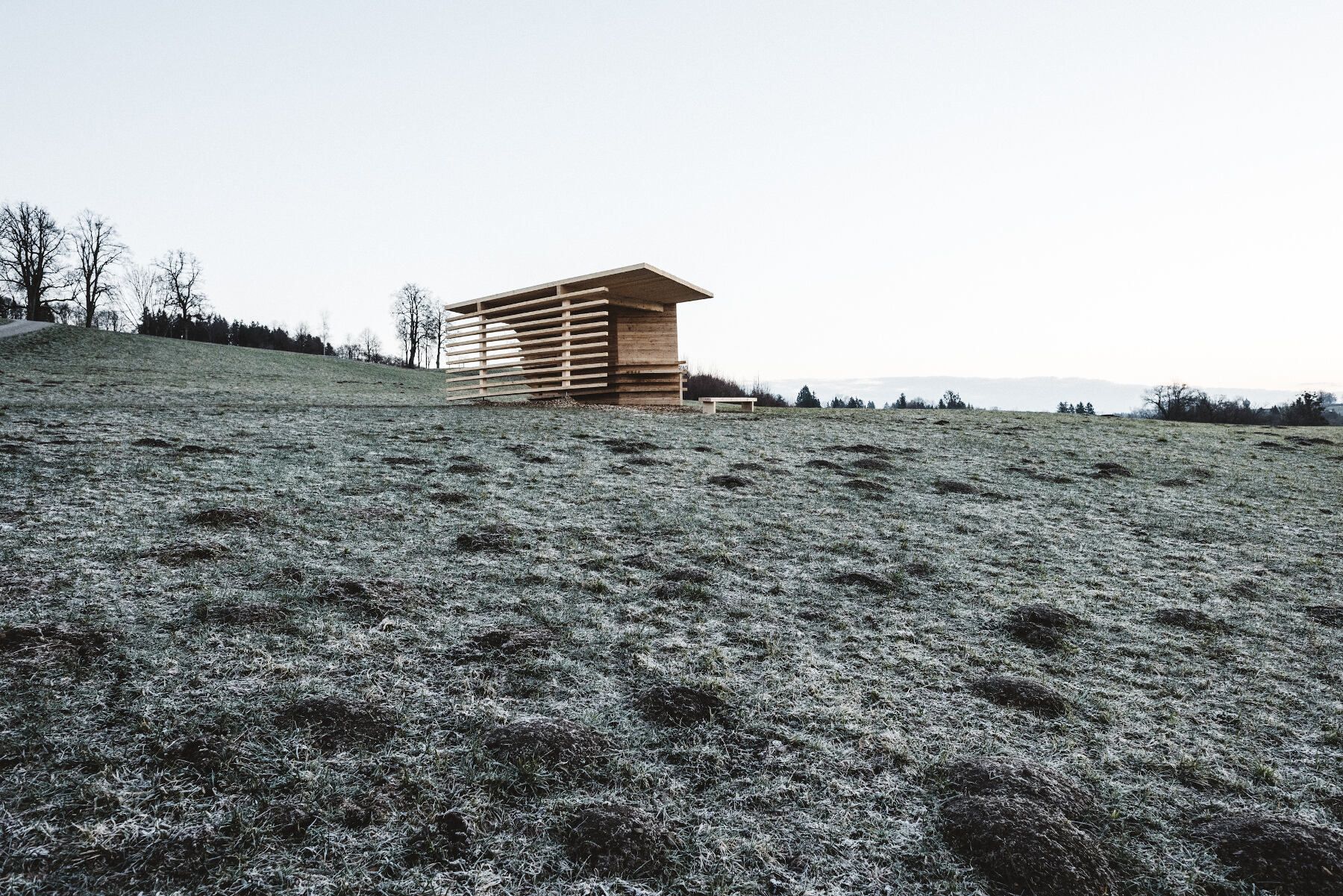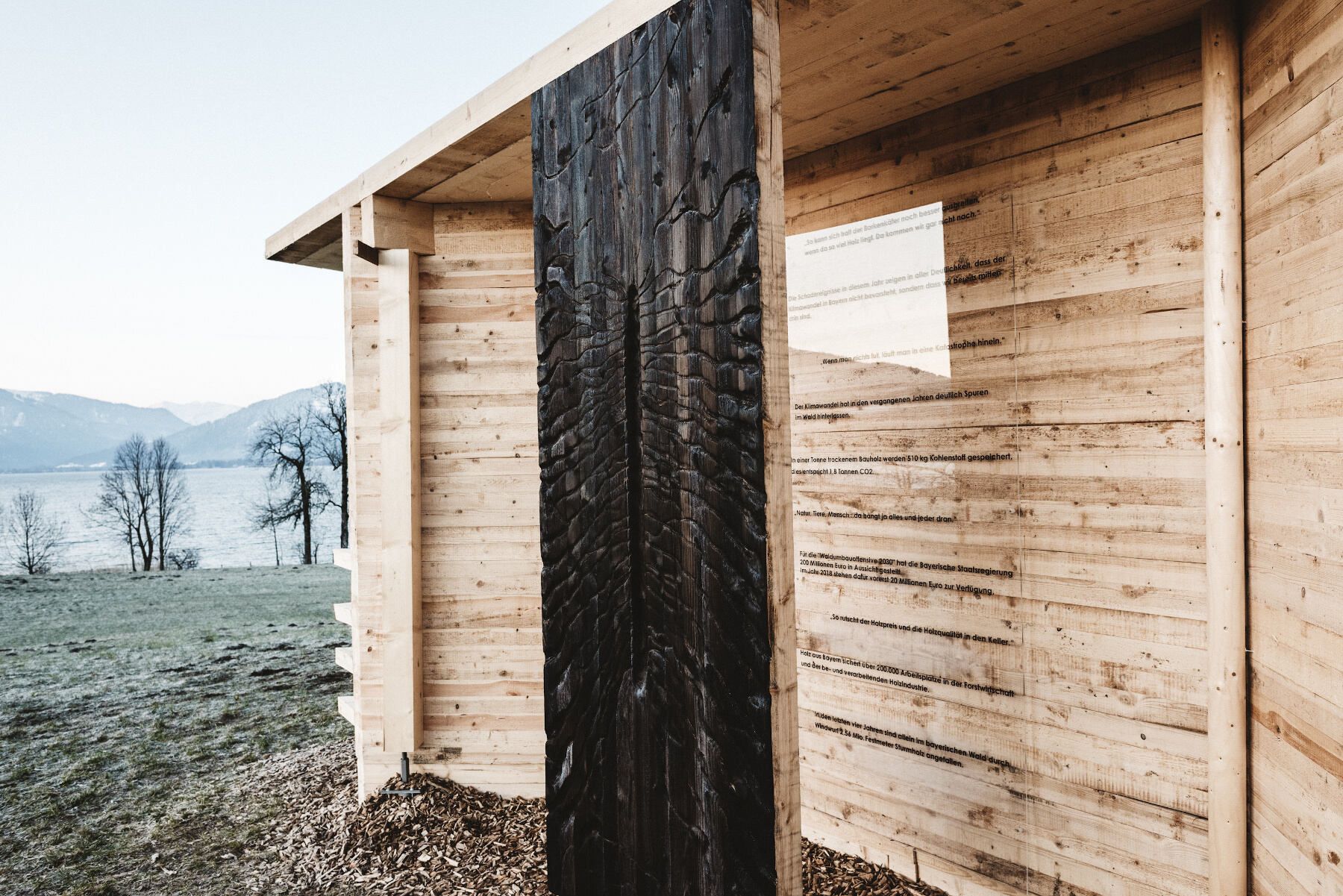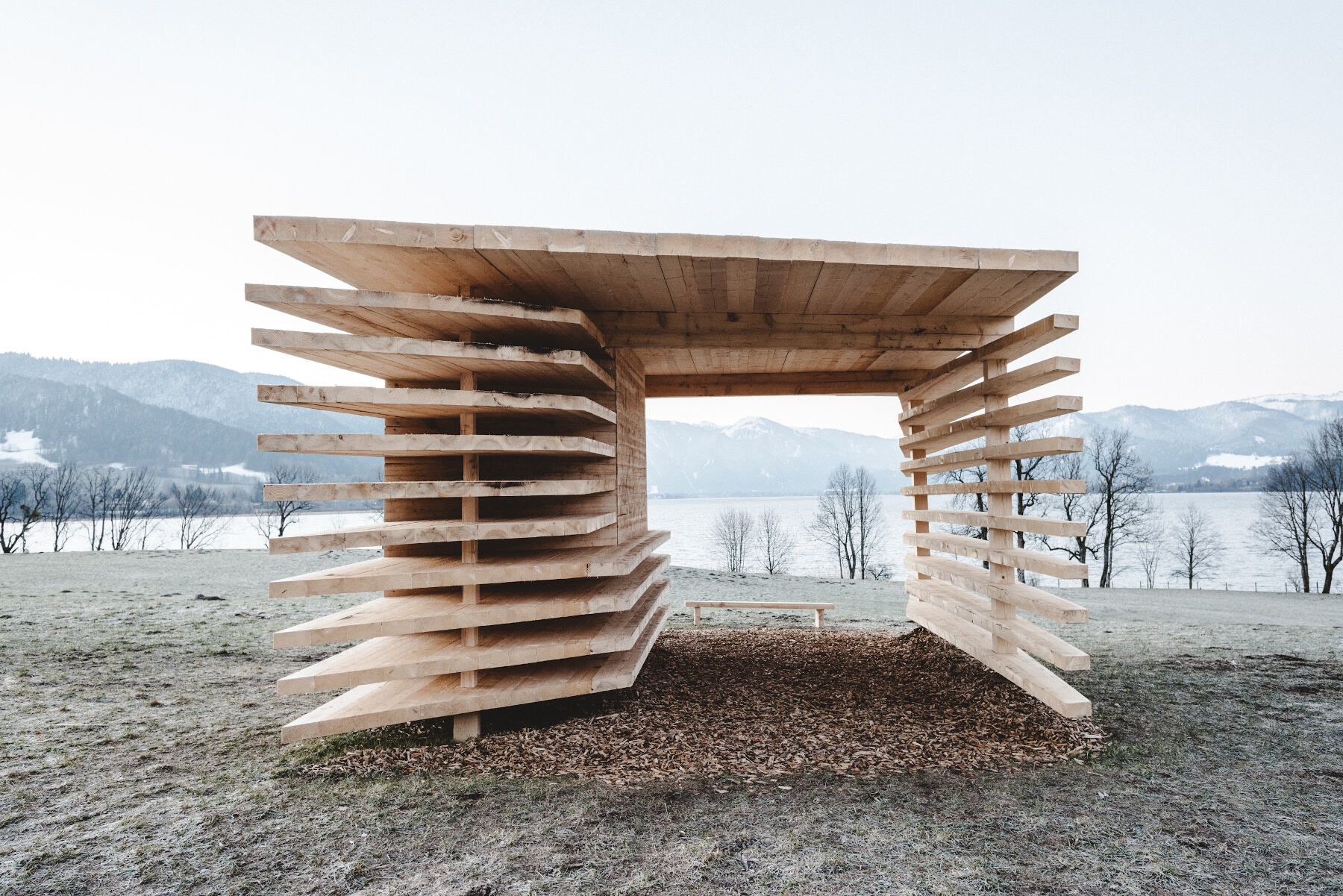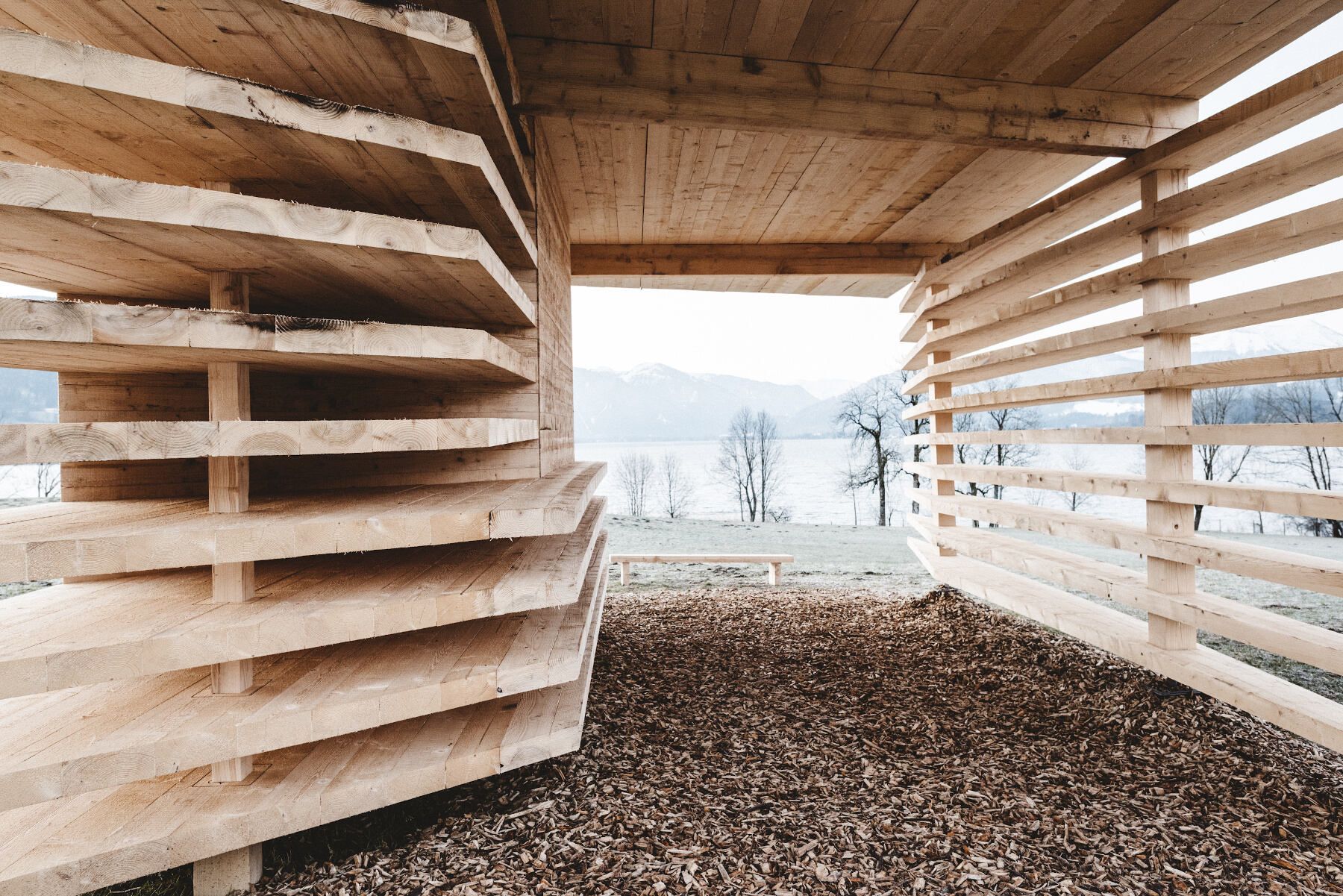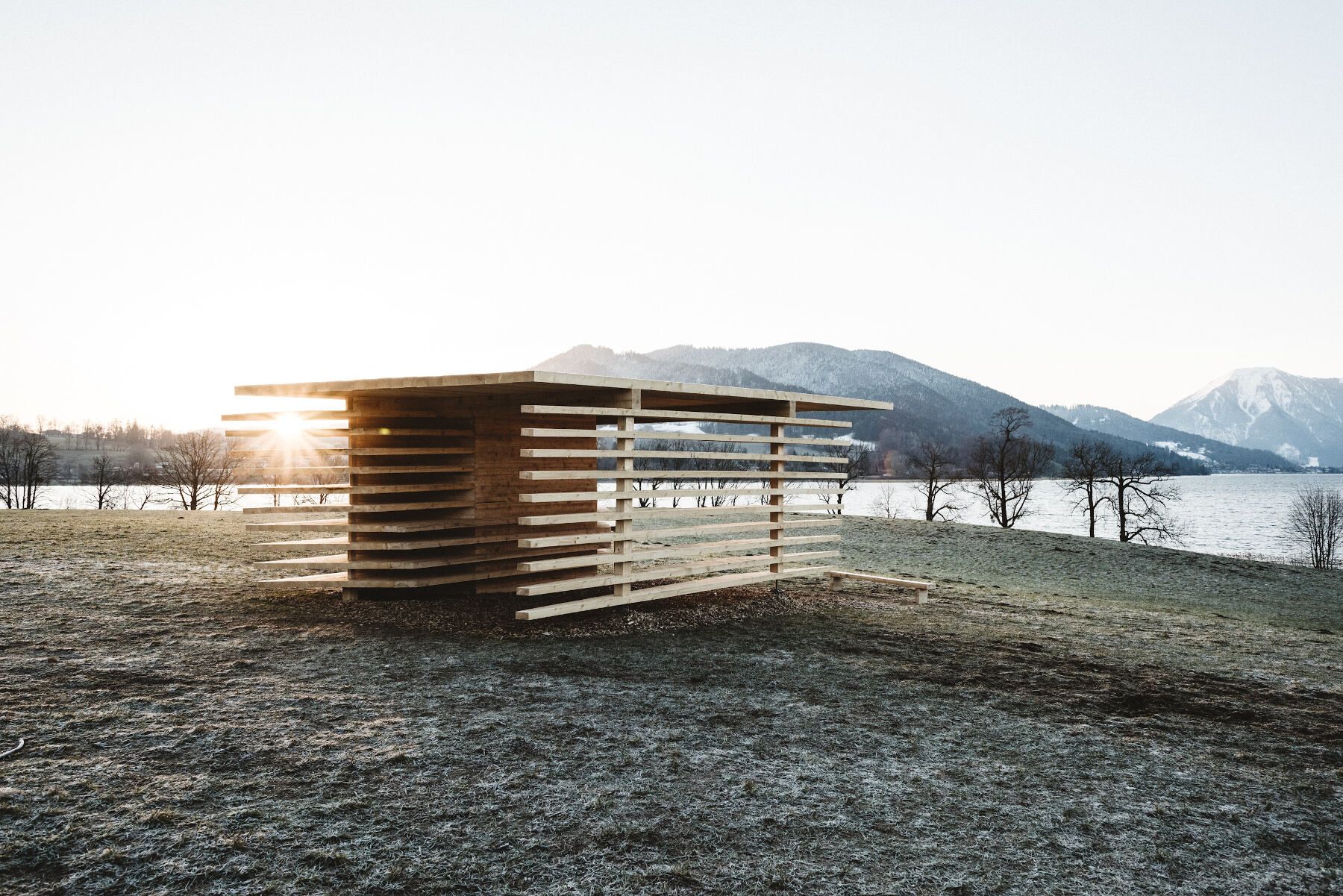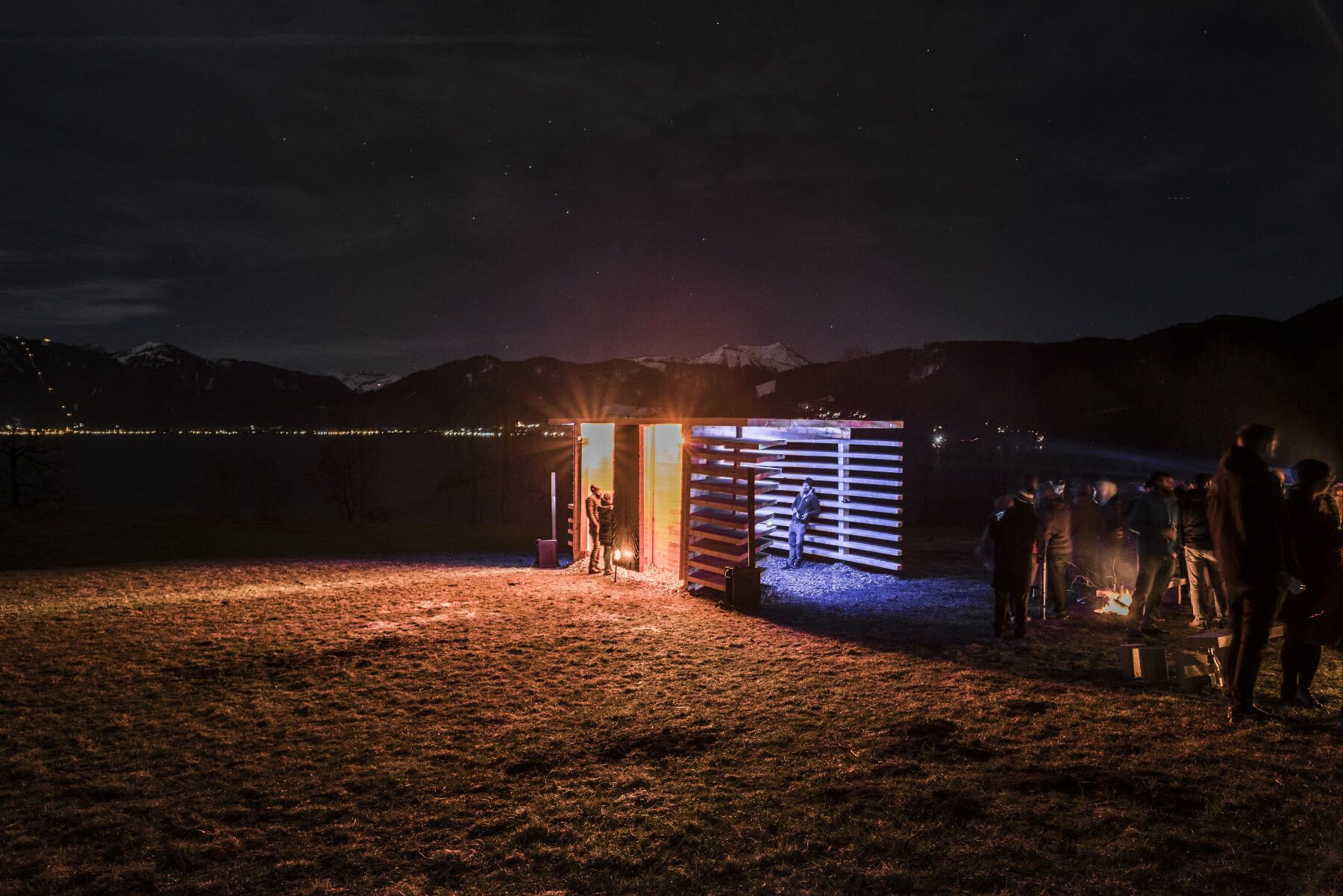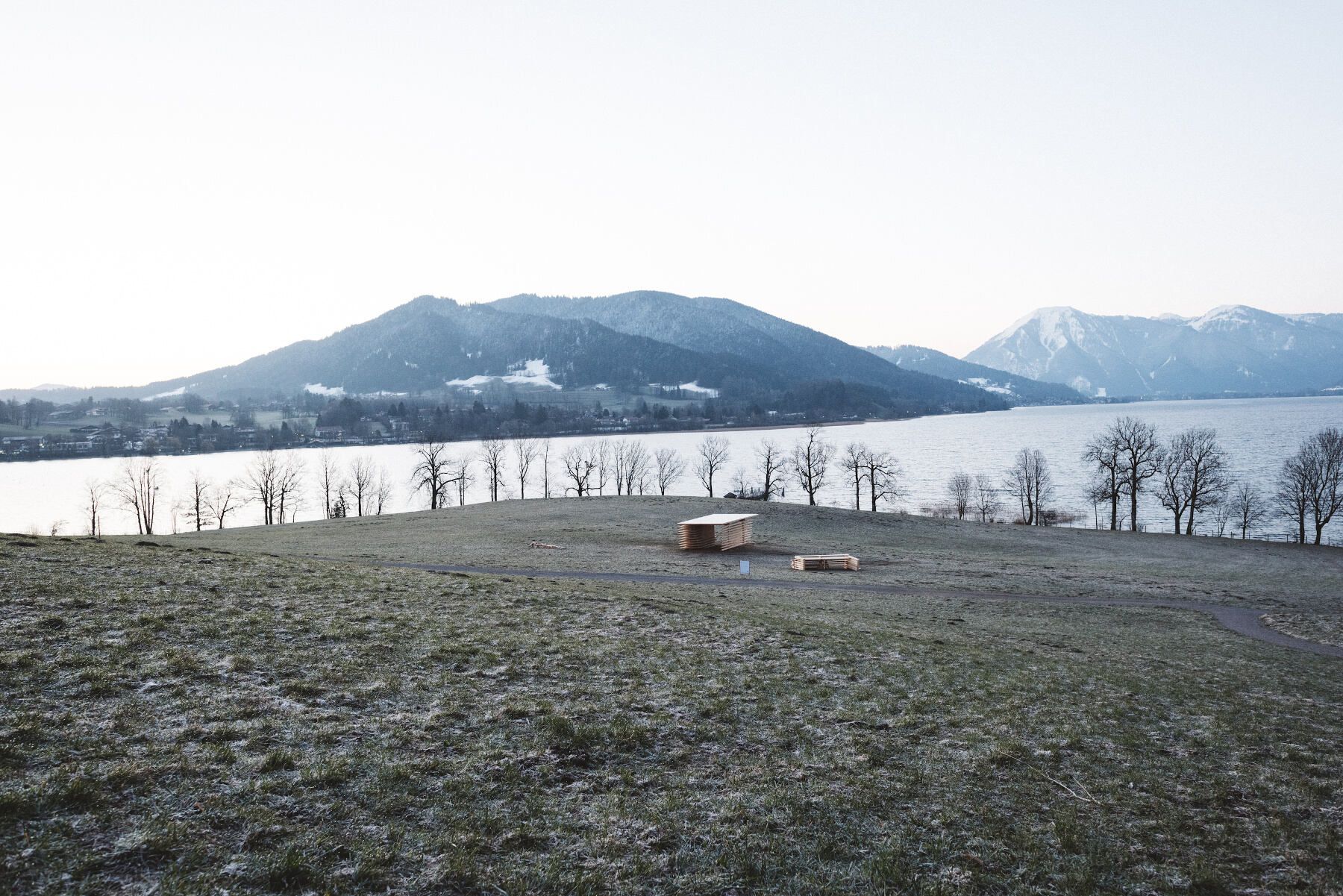Bark beetles in the ‘Blickwinkel’ pavilion
The ‘Blickwinkel’ (perspectives) pavilion gives a voice to the foresters and woodland owners suffering under the effects of climate change.
The project was initiated as part of the Munich Creative Business Week 2019, whose theme this year was ‘Design Connects’. The design is based on the shape of a cut-open tree trunk. This is reflected in the horizontally stacked slats of the pavilion’s outer wall. Steep angles and a powerful dynamic imbue the architecture with an unambiguous direction. The structure points towards nature with its view out over the Tegernsee. A space has been created to promote dialogue between its visitors. It provides a talking point regarding the value of good, modern architecture.
The name ‘Blickwinkel’ was chosen because this space has been designed as a meeting point. The impact of climate change is addressed through the use of damaged timber from the woodlands of the Pfund Jachenau forestry business, as well as through the presentation of quotations from foresters directly affected by the issue.
The causes of the damage vary. The triggers are most commonly extreme weather events, whose frequency/almost annual occurrence has increased dramatically over the past 15 years in particular. Climate change is on everyone’s lips. Without getting into who or what is responsible for climate change, it is fair to say that this topic is more pervasive than ever. Like a classroom, the forest shows us how conditions are changing. It also shows us our mistakes.
The pavilion also gives a voice to those who are severely affected, yet often remain overlooked in the public debate: forest owners, who have a duty to perform. It is crucial, they say, to deny the beetle its breeding grounds in April in time to prevent their number growing further. The task is therefore to eliminate old, infected trees with hibernating beetles, i.e. remove these trees from the forest, debark them and store them. The vast quantities of damaged timber represent a logistical nightmare that poses an acute threat to these people’s livelihoods.
To ensure that forests can continue sustainably to provide high-quality raw materials and services in the future, they must be made climate-resilient. This above all means reducing vulnerability to damage by planting a mixture of tree species appropriate to the respective location and to move away from outmoded, homogeneous woodland without natural rejuvenation. Alongside the forestry and agriculture sector, everyone can do their part to safeguard the functionality of forests across the generations, whether it’s treating them with respect when engaging in leisure activities within woodland, mindful consumption of wood-based products and reducing the emission of environmentally damaging pollutants.
On Saturday, 16 March 2019, a large number of visitors came together for an open discussion, during which the project’s initiators and local forester Felix Karpf provided information on this topic. The event concluded with a visual performance by Stein Communication, which added an artistic dimension to the gathering. For the period of a few hours, a space was created that brought together people with different backgrounds and allowed them to share their experiences, engage in discussion and show solidarity.
Thanks to everyone who contributed, attended, helped out and made the evening at this unique location so special.
